Now you can enjoy your houseplants without having to tolerate any unwanted guests. Wondering how to get rid of fungus gnats? You aren’t alone! Learn how to prevent and how to get rid of gnats in plants naturally.
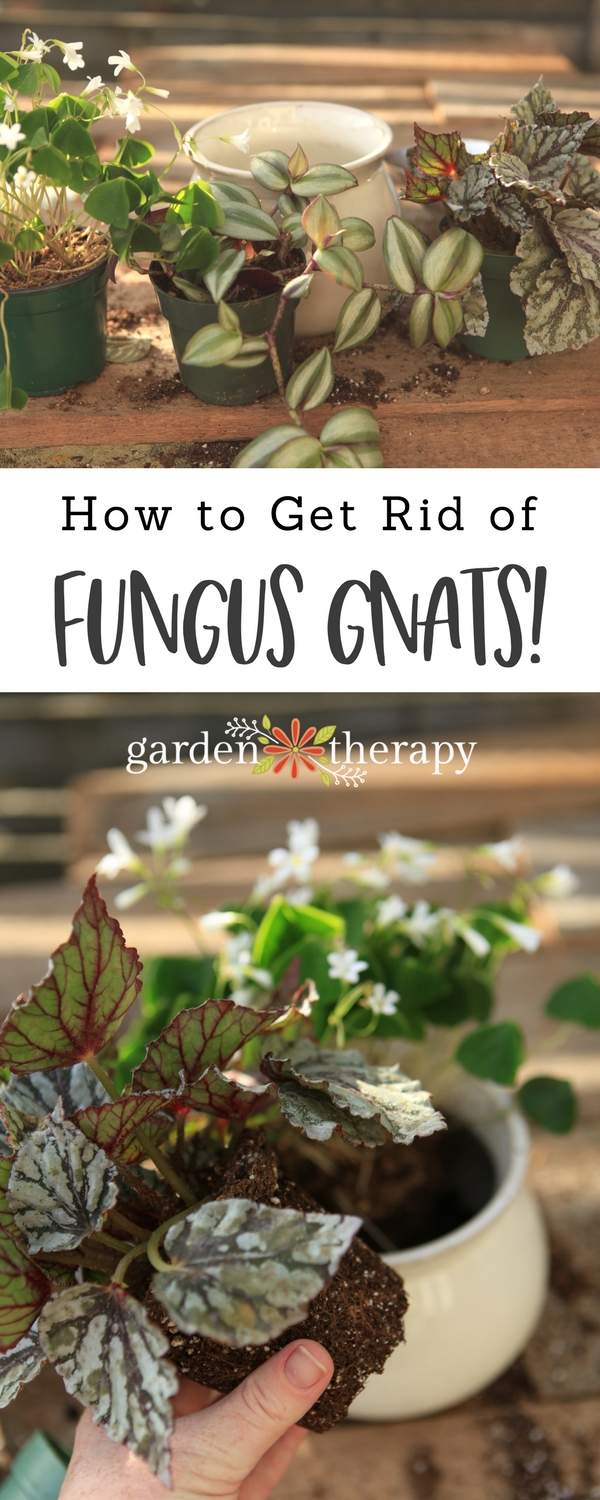
There’s something refreshing about having houseplants inside your home. They breathe life into a house and also add a nice colorful flair.
Houseplants bring a wonderful, lovely dose of nature indoors where you need it most, further helping us by purifying the air in our homes.
However, at some point, you might notice some unwelcome visitors making your houseplants their home. I’m talking about fungus gnats—those annoying little flies that appear whenever you water your plants. Ugh! Do these houseplant pests plague your plant babies too?
Don’t worry, if you are having gnat problems, there are simple—and natural—ways to not only prevent but also get rid of fungus gnats in soil.
Disclaimer: First, a disclaimer. I love living things and try to support natural insects anytime I can. For example, in the outdoor garden, I work to create a natural ecosystem that supports predators for the pests that attack my plants.
Indoor plants, however, have only a few natural predators that want to kill fungus gnats – the people and pets they annoy! Unfortunately, the only reasonable way to get rid of fungus gnats in your house is to kill off the pests you have and treat your plants to prevent future infestations.
In this post, we will cover:
- What Are Fungus Gnats and How Do They Get in the House?
- Why Are Fungus Gnats Bad?
- When Are You Most Likely to Find Fungus Gnats?
- How to Get Rid of Fungus Gnats
- Make the Natural Habitat Inhospitable
- Use a Soap-and-Water Mixture
- Use Sand or Gravel
- Dispose of the Top Layer of Soil Outdoors
- How to Prevent Fungus Gnats
- Don’t Overwater Your Houseplants
- Water From the Bottom
- Store Extra Potting Soil in an Airtight Container
- Now That Takes Care of Gnats, but What About Other Houseplant Pests?
- Love houseplants? These Posts Are Great Reads
What Are Fungus Gnats and How Do They Get in the House?

Fungus gnats, also known as soil gnats, are small dark insects that look similar to fruit flies and live in the soil of houseplants. When you have them, you will notice them when you water your plants or disturb the soil in other ways.
One way to get fungus gnats is to leave your houseplants outside. Most often, though, they come straight from the nursery. You don’t realize it because they hide in the soil until you bring them home unknowingly.
Their larvae eat plant roots and fungi in the soil. Then they suddenly appear in houseplants after the larvae hatch.
Why Are Fungus Gnats Bad?
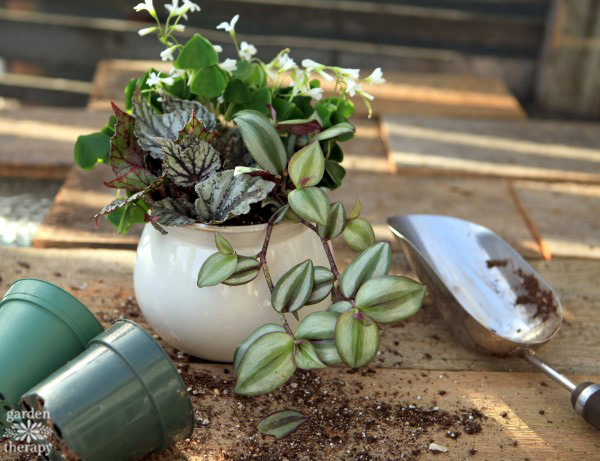
While these pests are a nuisance in noticeable numbers, it might be comforting (on some level) to know that the adults are harmless insects that do not bite.
Also, they don’t do much damage to strong, healthy plants, but they can cause wilting yellowing leaves, stunted growth, and even death in seedlings and more fragile plants.
But honestly, nobody wants a swarm of gnats flying in your face every time you water your houseplants. Yuck.
When Are You Most Likely to Find Fungus Gnats?
Nuisance problems with fungus gnat adults tend to be most noticeable during late fall and winter, for a couple of reasons:
- Houseplants that live outdoors during warm months will commonly start breeding fungus gnats. When these plants are brought indoors, populations may increase due to the warmer temperatures found in homes.
- People are indoors more during the colder months, making it easier to notice an infestation.
How to Get Rid of Fungus Gnats
Killing off soil gnats is really not very difficult, and thankfully, you don’t need to bug bomb your home (yay). It all has to do with disrupting their life cycle and making your home inhospitable for these pests. Here’s how to naturally treat your houseplants and get rid of gnats in the soil.
Make the Natural Habitat Inhospitable
Fungus gnat larvae need moist soil to survive. By letting it dry out completely before your next watering, it will get rid of the gnats in the soil and discourage new adults from laying fungus gnat eggs, thus effectively cutting out the larval stage altogether.
Use a Soap-and-Water Mixture
Take a cup of water and add a few drops of liquid dish soap or liquid Castille soap. Use a spray bottle to spray the top of the soil with this to kill the larvae. Repeat this process again in a few days to ensure that you have killed all of the larvae.
While some people recommend vinegar traps, I have found the soap and water to be more effective. Vinegar (and in particular a bowl of apple cider vinegar) is better suited for making a fruit fly trap.
Use Sand or Gravel
Fungus gnats only lay their eggs in the top inch of soil. Replacing that top inch with sand or gravel creates a dry environment and robs them of nutrient-rich fungus to munch on. Without their needed source of food available, they won’t want to lay their eggs.
You can also use pretty decorative aquamarine rocks and add a splash of color to some of your favorite plant babies.
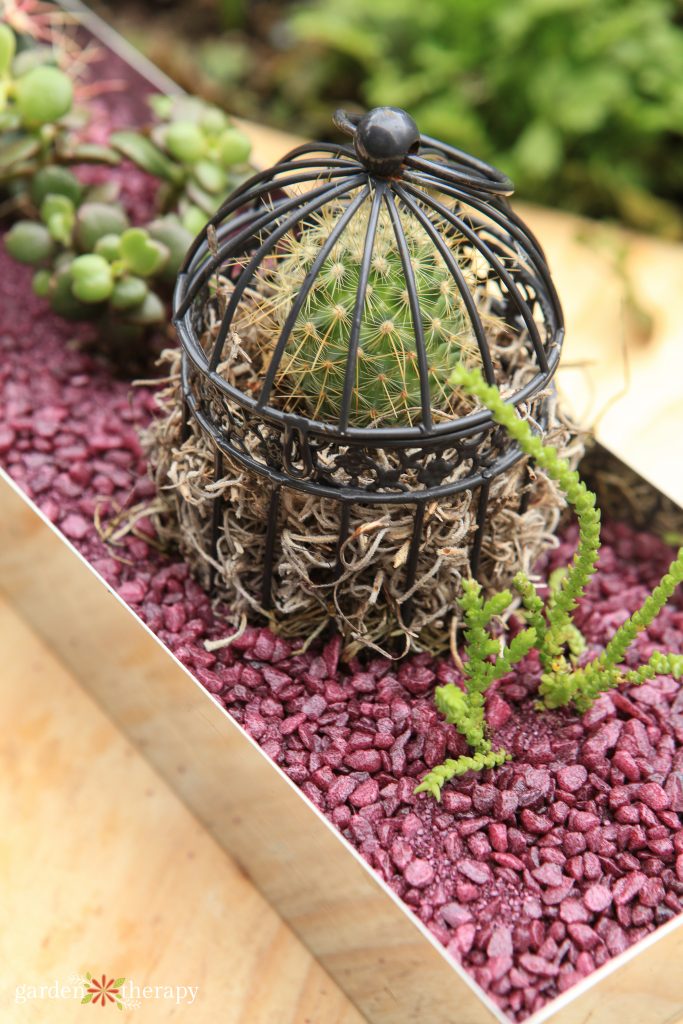
Dispose of the Top Layer of Soil Outdoors
The eggs can still hatch. Let them hatch outside rather than somewhere in your home. You don’t want to just move your pests from one part of the house to another.
By taking all of these steps, you can naturally control and prevent fungus gnat infestations.
How to Prevent Fungus Gnats

Let’s chat about the steps you can take to prevent these annoying pests from ever entering your life in the first place!
Don’t Overwater Your Houseplants
Make sure you aren’t overwatering your plants. Moisture is a big plus for gnats, so to make their new environment inhospitable, you need to let the soil they live in dry out completely.
Neither adult gnats nor their larvae can survive in dry soil, so let your soil dry out completely between watering as often as possible. Here’s an entire guide devoted to teaching how to water your houseplant properly.
Water From the Bottom
Bottom watering will help the topsoil (where the gnats lay eggs) stay dry while keeping your plants hydrated and happy.
Store Extra Potting Soil in an Airtight Container
If you keep your potting soil in the bag it comes in, fungus gnats can easily get in and lay their eggs. However, the eggs need air to survive, so airtight containers like buckets with tight-fitting lids will keep gnat larvae at bay.
Now That Takes Care of Gnats, but What About Other Houseplant Pests?
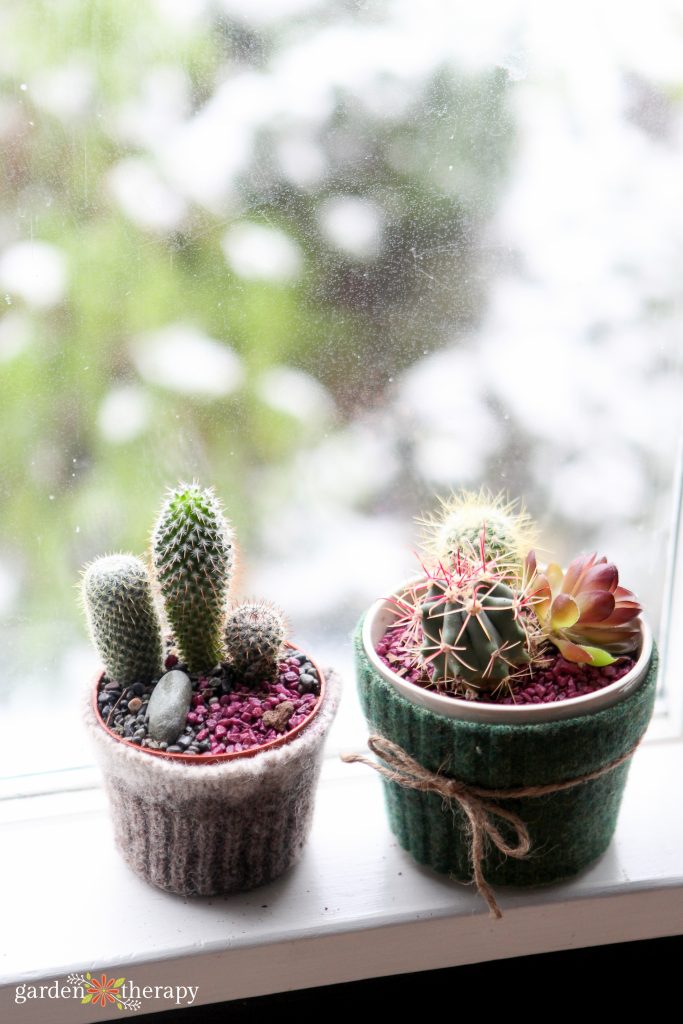
Expert David Squire popped by as a guest of Garden Therapy to share information on 8 of the other most common indoor plant pests and how to get rid of them. He has some great tips and tricks here for getting rid of houseplant pests!
Love houseplants? These Posts Are Great Reads
- How to Prevent, Identify, and Get Rid of 8 Common Houseplant Pests
- The Best Houseplants for Low Light
- These Aren’t Your Grandma’s Houseplants! Indoor Plant Projects for Modern-Day Decor
- Houseplants as Biofilters: Do Indoor Plants Really Purify The Air?
- Houseplants that are Poisonous to Pets: How to Keep Your Fur Babies Safe

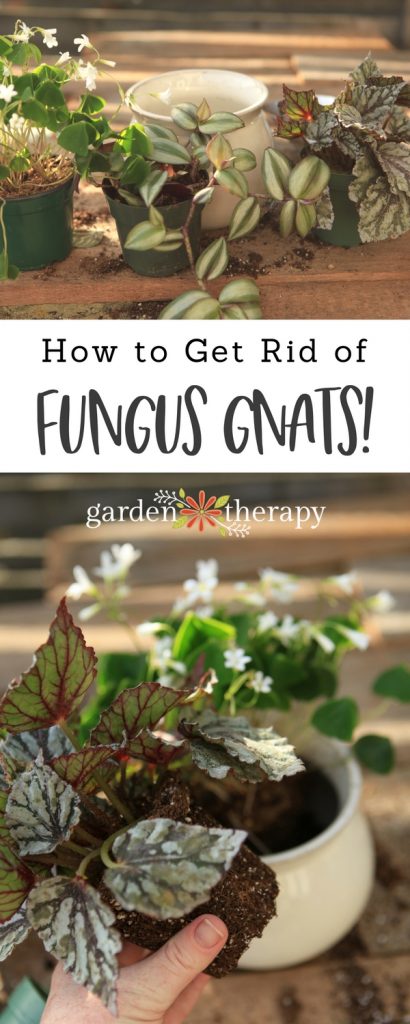



Hi Stephanie, great article. I love the sand tip. Does it matter what type of sand? I would like to get some sand but I am not sure where to buy or what kind. Aquarium sand or regular sand for crafting?
Thanks
Hi Monique, you can use play sand, horticulture sand, or craft sand – whatever you like. I would avoid beach sand because it may bring in more critters!
Thank you for the advice. New to gardening therapy! I decided to take my plant outside and remove the first few inches of soil. Hoping that my other plants aren’t infected too! So happy I was able to do it naturally with minimal effort.
yay! Welcome to you and goodbye to gnats!
Hi
I have MG cactus soil. I’m scared to see if there are gnats in there, if I mix that soil with bonsai jack will that help get rid of gnats if there are any?
I do like the idea of bottom watering, but if you do place sand on top, can you still water on top or does it disturb the sand and make it sink?
Can’t wait to try these suggestions. I brought home 2 dracaena from the nursery and now all my plants are infested 🙄 I hope these tips work!
Hello!
I have had a hell of a time with these little gnats the last 2 yrs in my house plants and March plantings.
I know now every bag of potting mix has will have gnats in it. The bags you buy are not sterile. I don’t buy the cheap potting mix either. I have tried everything to get rid of these gnats, the baking the soil mix, the Proxide soak, the sticky traps, the Store bug spray, the dish soap and water. Bowls of water and apple sider and dish soap, Misquito Dunk, washing my plants and roots and then changing my soil to new soil. Hunting adult gnats down 2/3 times a day with a spray bottle to kill them. Letting my soil dry out between watering. Lately I tried the screened sand on top and a coffee filter at the bottom with an elastic. But the bottom of my pots started stinking. So now I am trying the sand at the bottom of my pots too. I hope this solves my problem with them.
I don’t know what else to do. Those little gnats work at the bottom of the plant pots too. Nobody mentions it though. Also you got to be careful putting your potting mix in a air tight container, it will start molding I find.
I hope the hell I have them wiped out by March when I do my planting.
What are your thoughts on my big problem.
I think some years, some bugs are worse for some reason.
Thanks
Nicole
Did you ever get rid of these? You sound like me trying everything! I put sand on mine today and took my citrus trees off the elevating pedestals that keeps them from standing water. Now they sit tight on the tray that I sprayed with bug killer. I tried everything and think I’ll probably have to toss 2 expensive trees because of stupid little gnats. I can’t start any new plants inside for winter because of these either.
The sand killed everything. I just took it all away to treat the soil with something else called Mosquito Bits just to make sure I kill everything living inside the soil too. The sand won’t do that quick enough for me. Winter isn’t here yet so the sand is something I’ll use for several more weeks. Until they’re all gone I can’t start any new plants inside. ;o/